Find out what an inverter is, how it functions, and why it is necessary to solar systems. Get to know about the power inverters types, advantages, and usages in this thorough guide.
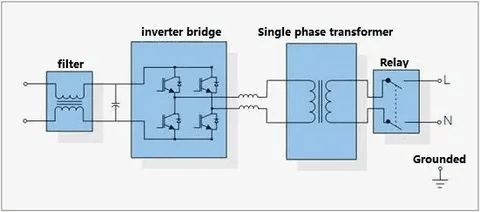
Inverter is essential electrical equipment used to convert electricity in the form of direct current (DC) into the form of alternating current (AC). This is the basic power conversion technology that allows us to utilize DC power sources such as solar panels, batteries and our car electrical systems to drive ordinary household appliances and electronic that require AC power.
What Does an Inverter Do?
The main role of an inverter is to convert the constant and one-directional power of DC energy into a swinging and reverse power that of AC energy. Whereas DC power moves in only one direction in an unchanging fashion, AC power regularly changes direction every so often in a range of 50-60 times every second depending on the electrical grid standards in your area.
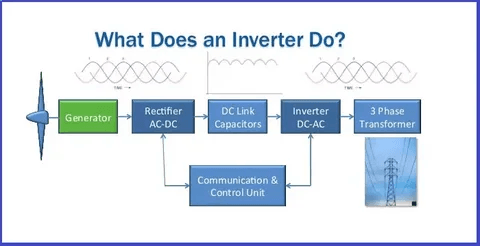
This changeover process is critical since the majority of the appliances, electronics, and electric systems in the household are made to run on the AC power. Refrigerators, televisions, computers and lighting arrangements would never work in conditions of direct current electricity source such as solar panels and batteries unless an inverter is used.
Inverter provides this conversion by complex electronic circuitry to switch the DC input on and off very fast producing a waveform which approximates AC power. The modern inverters have the latest semiconductor technology to convert power efficiently and reliably with minimum energy loss.
How Do Inverters Work?
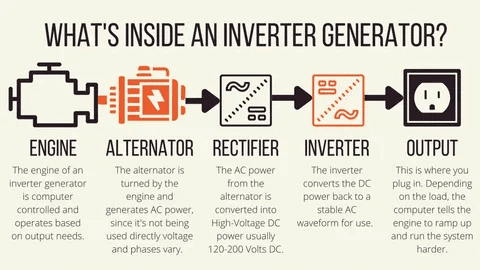
The inverters work in a sequence of phases, using a number of important components in the process to facilitate effective conversion of power. The procedure starts when DC current is fed into the inverter by any power source like batteries or solar panels.
The oscillator circuit of the inverter would be the first step and it produces a high frequency AC signal. This signal controls changes of electronic switches, usually transistors of power, or MOSFETs (Metal-Oxide-Semiconductor Field-Effect Transistor), to turn a DC input current quickly on and off.
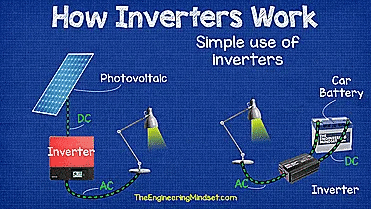
The switching activity produces a crude representation of an alternating current wave and although this first signal is a long way from the smooth sinusoidal type wave needed in most applications, the switching activity actually contains much more information than is needed. So as to clean up this signal, filtering circuits are used at the output of the inverter to soften up the jagged corners and generate a more palatable AC signal.
The last component is the transformer which increases or de-increases the voltage to the level needed by the load. Electrical isolation between DC input and AC output is also provided in this transformer which will promote safety and no power accidents.
Types of Inverters
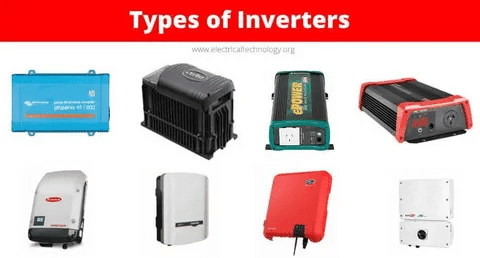
Pure Sine Wave Inverters
Pure sine wave inverters generate AC power that is similar to the very smooth sinusoidal wave-shaped power of utility power grid electricity. These inverters produce the best power output and therefore are suitable when dealing with sensitive equipment, medical equipments and high end appliances.
The pure sine inverters will have the clean power output that guarantees the maximum performance and life span of the attached gadgets. They also do away with the danger of getting interferences, humming, or overheating that may be able to arise with inferior power sources.
Modified Sine Wave Inverters
Quasi-sine wave inverters (which are also modified sine wave inverters) generate a staircase approximation to a sine wave. They are cheaper than pure sine wave model and can still deliver sufficient power to the most frequently used household items and other electronics.
Such inverters can be used effectively on resistive loads (such as incandescent lights and heating elements) or on many electronic devices having switching power supplies. They can however create certain inefficiencies or small disturbances to sensitive equipment.
Square Wave Inverters
The simplest and lowest cost is square wave inverters which have only a simple on-off square wave output. Although adequate in terms of basic uses, they are seldom deployed in contemporary installations because of the low quality of power they can deliver and their ability to cause damage to sensitive electronics.
Grid-Tie vs. Off-Grid Inverters

Grid-Tie Inverters
Grid-tie inverters are built to operate together with the electrical grid, and result in the ability to feed surplus power created by solar panels back into the utility grid. This is because these inverters have to synchronize output frequency with the grid frequency and output voltage with the grid voltage to operate safely, and efficiently.
Grid-tie inverters come with safety features which automatically switch off during power outage to safeguard utility staff. They also use Maximum Power Point Tracking (MPPT) technology to maximize energy harvested in solar panels.
Off-Grid Inverters
Standalone inverters are developed for systems operating off grid. Such inverters are normally connected to battery banks in providing constant power even when the main DC power is not present.
Off grids must be well sized and managed in terms of batteries to guarantee a reliable system. These inverters will tend to have battery charging functions and load management options to maximize their systems efficiencies.
Key Inverter Features and Specifications
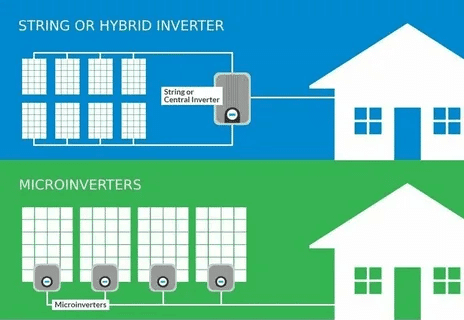
Power Rating
Power rating describes the amount of electrical load an inverter will accept with the units usually being watts or kilowatts. This specification shall be equal to or such quantity of power to support all the connected devices.
When choosing an inverter, one should pay attention to both continuous power rating (working in a stable state) and surge power rating (etalon short-term peaks). Applications Many appliances need much more power when starting up then when the appliance is in the operating phase.
Efficiency Rating
Efficiency can be defined as the effectiveness of an inverter to convert the DC power to the AC power and is expressed in percentages. When the efficiency rating is higher, less energy will be lost in the conversion process and we will see that the overall performance of the system is improved and the cost at which it will operate will be reduced.
Efficiency The efficiency ratings of modern inverters normally range between 85-98 percent with the superior models being more than 95% efficient under ideal conditions.
Input Voltage Range
Input voltage range is the range of DC voltages which an inverter can process. This is the range that should be able to power your DC power source which could be a solar panel array, battery bank etc and other DC supply.
Large input voltages ranges give a high degree of flexibility and enhanced performance with different conditions, e.g., fluctuating solar light in solar applications.
Applications of Inverters
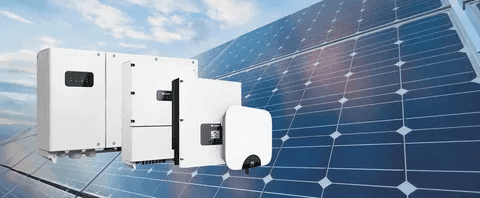
Solar Power Systems
Solar power installations need inverters that change DC electricity produced by the photovoltaic panels into the AC power usable in households or feeding them into the grid. Solar inverters also tend to include such features as MPPT optimization and monitoring.
Backup Power Systems
Battery-powered backup systems allow supply of AC power during power failure with the aid of the inverters. These units allow the automatic transfer of the utility power to battery power in the event of utility power failure and continue to run on critical loads.
Mobile and RV Applications
Inverters permit the travelers and mobile personnel to operate AC products with the help of the electrical system of their vehicle or more likely small portable battery banks. This is necessary to ensure that comfort and productivity is maintained even when people are not at places where they have access to traditional sources of power.
Industrial Applications
Industrial inverters have a wide range of applications such as operating isolated equipment peripheral to the main equipment or to supply clean power to delicate industries. They are also applied in renewable energy plants, and power storage devices.
Choosing the Right Inverter
Power Requirements Analysis
The total power requirement of all the devices that you want to connect before you choose an inverter. Add both stand-by operating level and start up surge to provide sufficient capacity.
Think long term expansion and choose an inverter that has a little excess available to allow adding loads or upgrading equipment.
Waveform Quality Considerations
Select high-end appliances, medical equipment or sensitive electronics by desired pure sine wave inverters. Simpler applications where cost is the major consideration may be sold as modified sine wave inverters.
Installation and Safety Requirements
A variety of options makes choosing an inverter more complex, so it is better to take into account the complexity of installation, as well as safety and local electrical codes. Certain apps might need particular security permits or approvals.
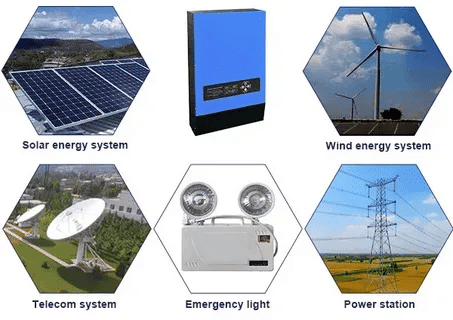
Benefits of Using Inverters
Inverters have many benefits that include making them almost necessary in any electrical system. They permit the use of renewable energy sources such as solar power to integrate in typical electrical uses and r lessen the reliance on fossil fuels and cut electricity prices.
The portability that can be created by use of the inverters makes it possible to have portable power, emergency proper back-ups environments and off grid existence. They also facilitate the implementation of energy storage systems, enhancing actions to grid stability and sealing potentialities during power cuts.
Environmentally, inverters enable use of clean energy technology, which contributes towards carbon emission and sustainable energy use.
Conclusion
The inverters are the major parts that solve the puzzle between the DC power source and the AC power demands in the current electricity systems. One who has to deal with renewable energy sources, backup power systems or mobile electrical applications has to know how they work, their various types, and how they can be used. Your choice of the inverter can make a difference in the realization of your solar power system design, emergency backup power installation and even portable AC power whenever it fits.

